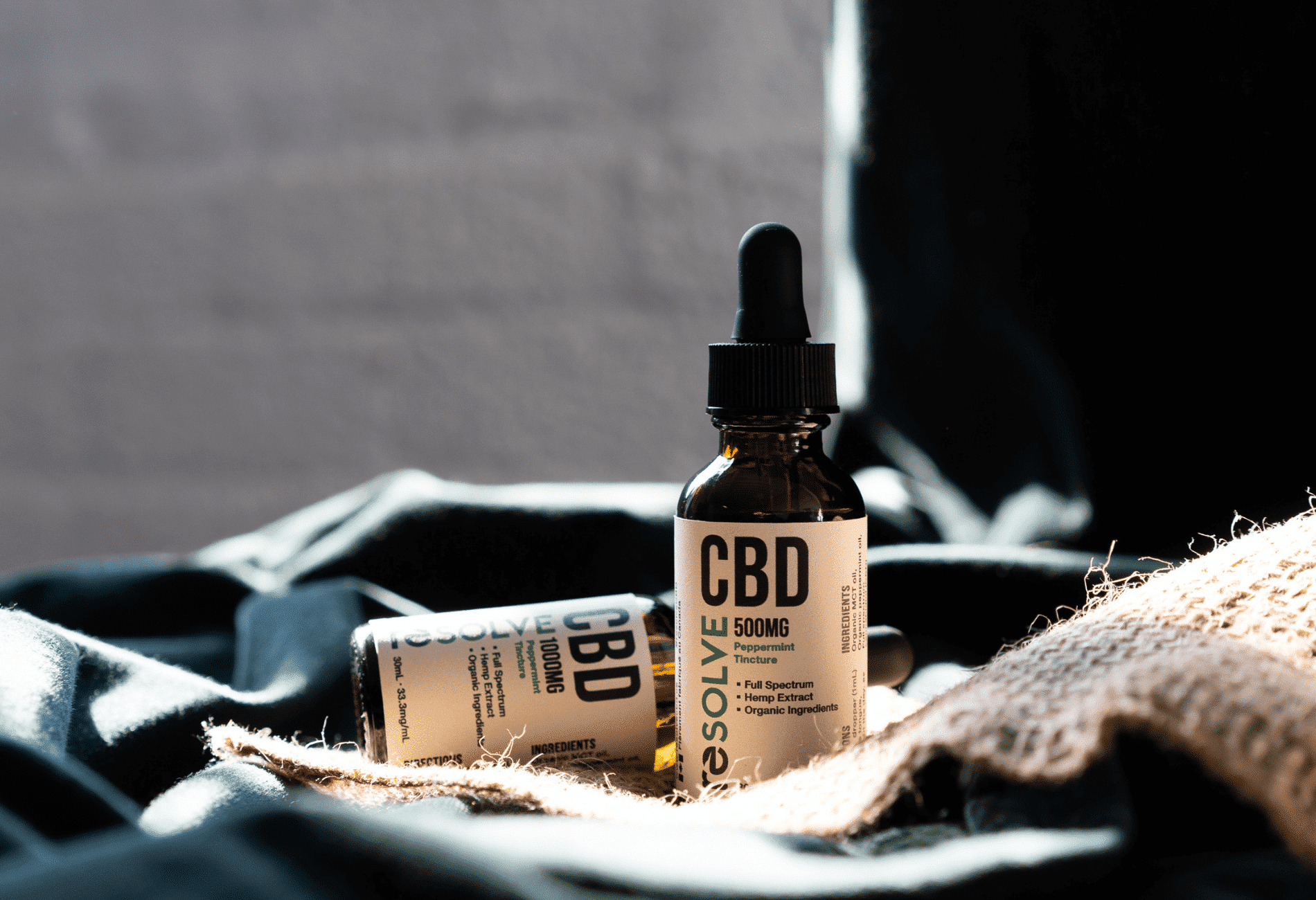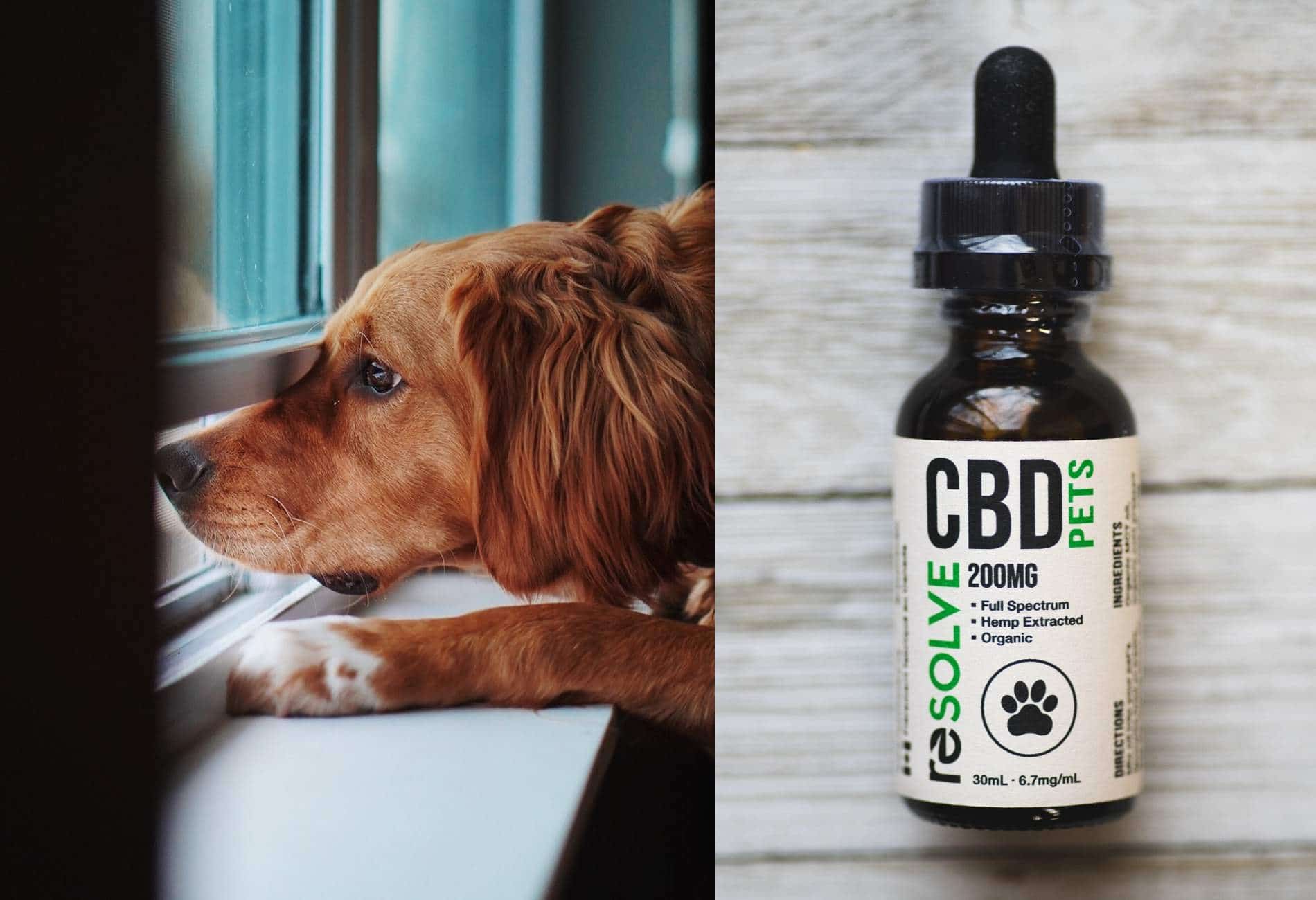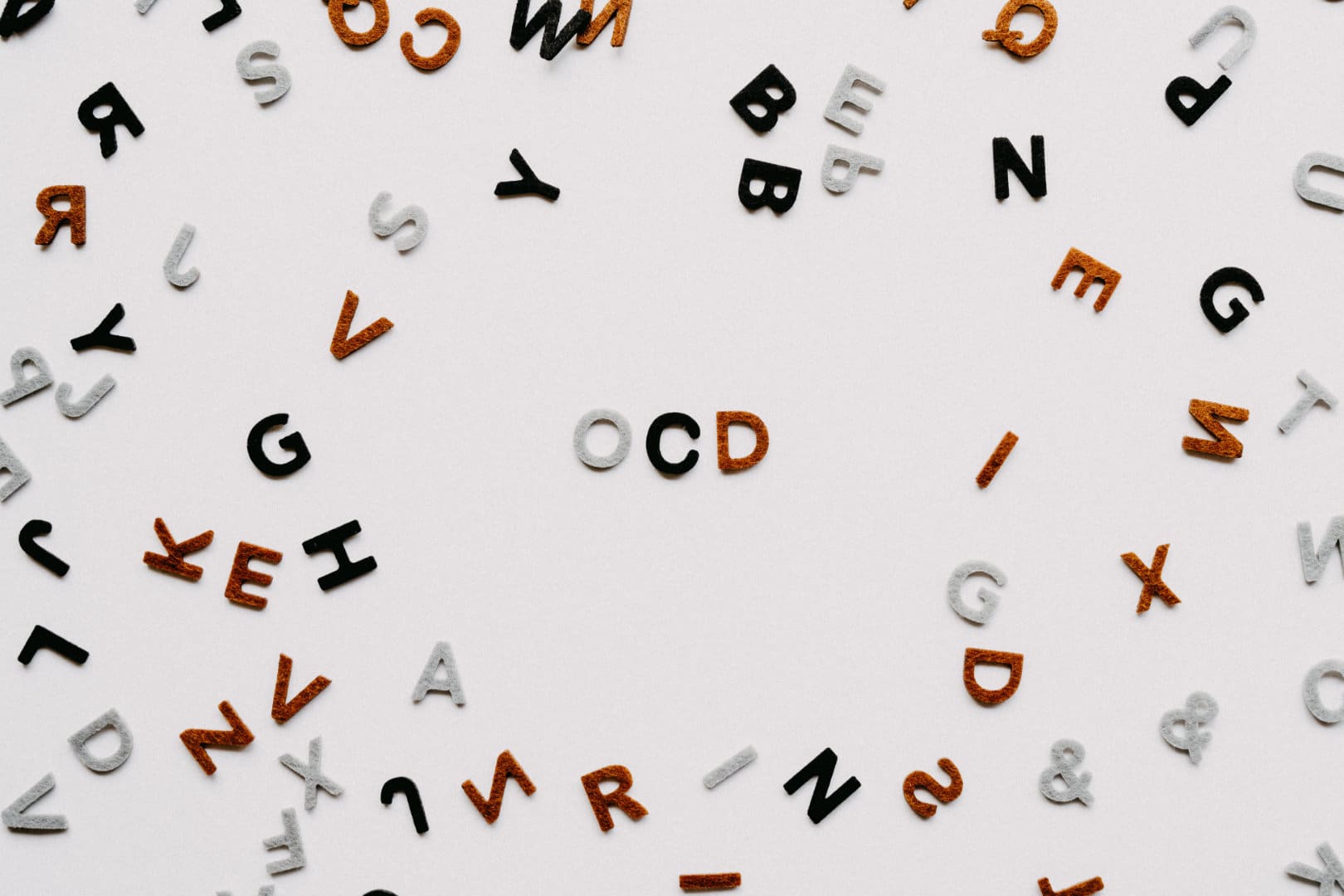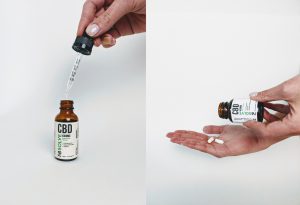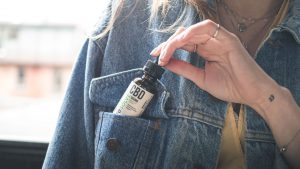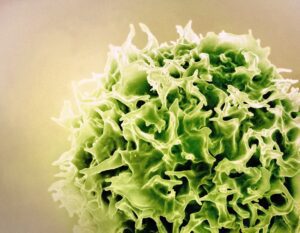Is CBD beneficial for Treating PTSD?
Reading Time: 6 minutes
Cannabidiol, or CBD, is an active component extracted from the cannabis plant that has shown potential in reducing and managing symptoms of post-traumatic stress disorder (PTSD).
PTSD is a mental health condition that can develop after experiencing or witnessing a traumatic event. It is classified as a psychiatric disorder linked to surviving or witnessing a traumatic life event and can cause a range of symptoms, including agitation, impaired concentration, memory problems, flashbacks, insomnia, and nightmares.
According to data from Statista, approximately 32% of people who have experienced physical assault or severe beating may develop PTSD. However, PTSD is not only caused by physical trauma but can also result from psychological trauma, with about 14% of those who experience an unexpected or sudden death of a friend or family member developing symptoms.
While most people who go through traumatic events may experience short-term difficulty adjusting and coping, some may have trouble sleeping, relive the event repeatedly, and experience depression and anxiety.
This article aims to explore the potential benefits of CBD for PTSD, as well as the scientific evidence and potential risks associated with its use. Additionally, we will discuss other treatments commonly used for PTSD and offer guidance on seeking help for those experiencing PTSD symptoms.
Contents
What is trauma? (Psychological)
The aftermath of a distressing event can result in what is known as trauma, a complex emotional condition with varied effects on individuals. Although the same experience may not impact every person, traumatic events encountered during one’s formative years, like abuse, neglect, and attachment disruptions, can be particularly devastating.

Later events beyond one’s control, such as being a victim of violence, experiencing a serious accident, natural disaster, war, or unexpected loss, can be equally challenging. When memories and thoughts of the traumatic event persist and worsen, they may trigger post-traumatic stress disorder (PTSD), severely affecting a person’s emotional regulation and ability to maintain healthy relationships.
What is emotional damage?
The repercussions of negligent or intentional actions of an entity on an individual’s well-being can result in emotional damage. These damages may manifest as mental trauma stemming from physical injuries, such as forgetfulness from brain trauma or insecurity caused by permanent scars. Additionally, emotionally charged scenarios can trigger physical reactions that contribute to emotional damage.
Emotional damage can also occur after any traumatic event, such as abuse, witnessing violence, or experiencing a life-threatening situation. It’s essential to recognize the symptoms of emotional damage, which may include feeling emotionally numb, having difficulty trusting others, and avoiding situations that trigger traumatic memories.
What is PTSD/CPTSD?
As we said earlier, PTSD stands for post-traumatic stress disorder. It is a mental health condition that can develop in some people who have experienced or witnessed a traumatic or life-threatening event.
On the other hand, CPTSD stands for complex post-traumatic stress disorder. It is a condition that is similar to PTSD but includes additional symptoms, such as difficulty regulating emotions, feelings of shame and guilt, and a distorted self-image. CPTSD can result from experiencing prolonged or repeated trauma, particularly in childhood, such as ongoing abuse, neglect, or violence.

PTSD and C-PTSD both arise from traumatic experiences and can lead to symptoms such as flashbacks, nightmares, and difficulty sleeping. Additionally, both disorders can result in intense feelings of fear and a sense of danger even when the threat is no longer present. However, some professionals differentiate C-PTSD from PTSD based on specific characteristics.
One of the primary distinctions between these disorders is the frequency of the traumatic event. PTSD is typically associated with a single traumatic event, while C-PTSD results from prolonged trauma that lasts for months or even years, often known as “complex trauma.
What are common treatments?
Different treatments exist to help manage and treat PTSD and CPTSD, these are:
- Psychotherapy: This is a form of talk therapy that aims to help individuals with PTSD/CPTSD work through their trauma and develop coping skills. Different types of psychotherapy include cognitive behavioural therapy (CBT), eye movement desensitization and reprocessing (EMDR), and prolonged exposure therapy.
- Medications: Antidepressants and anti-anxiety medications like cannabis may help manage symptoms of PTSD/CPTSD, such as depression, anxiety, and insomnia.
- Mind-body therapies: These therapies, such as yoga, meditation, and acupuncture, aim to reduce symptoms of PTSD/CPTSD by improving relaxation and reducing stress.
- Group therapy: This form of therapy allows individuals with PTSD/CPTSD to connect with others who have had similar experiences and provide support to one another.
- Self-help strategies: These may include lifestyle changes, such as exercise, a healthy diet, and getting enough sleep, as well as practicing relaxation techniques and other coping strategies.
How does one get help or treatment?
There are several ways to get help or treatment for trauma-related conditions such as PTSD or C-PTSD. Here are some options:
- Talk to your primary care physician: Your primary care physician can help you get started with treatment by referring you to a mental health specialist or prescribing medication if needed.
- Seek a mental health specialist: A mental health specialist such as a psychologist, psychiatrist, or licensed clinical social worker can help you with therapy and counselling. They can also provide medication management if needed.
- Join a support group: Support groups can help you connect with other people who have experienced similar trauma and can provide you with a sense of community and understanding.
- Reach out to a helpline: There are many helplines available for people who need assistance with trauma-related issues. These helplines can provide information, support, and referrals to local resources.
- Use online resources: There are many online resources available, including self-help resources, virtual therapy sessions, and online support groups.
What are the common symptoms of treatment?
It’s important to note that the goal of treatment is to reduce or eliminate symptoms, not to produce symptoms. However, sometimes people can experience temporary discomfort as they work through their issues in therapy.

Some common symptoms that can occur during treatment include emotional distress, such as sadness, anger, or anxiety; physical symptoms, such as headaches, nausea, or fatigue; and changes in sleep patterns or appetite.
Can CBD help with the condition?
There is a wealth of available evidence suggesting a positive correlation between the use of cannabis and the alleviation of symptoms of PTSD. Patients have reported success in using medical cannabis to reduce their PTSD symptoms, as attested by numerous testimonials. Additionally, a recent study published in the Journal of Psychopharmacology showed that non-cannabis-using Canadians who have PTSD may be at an increased risk for depressive episodes.
Cannabis contains various compounds, such as THC and CBD, which have similar structures to the cannabinoids naturally produced by the human body. Although the human body does not produce THC or CBD, these compounds can interact with the endocannabinoid system and affect various biological processes.
Can CBD help with treatment or symptoms of the treatment?
There is some evidence to suggest that CBD may help with symptoms related to PTSD, such as anxiety and sleep disturbances. CBD is a non-psychoactive compound found in the cannabis plant, and it has been shown to have anti-inflammatory and neuroprotective effects.
Some studies have suggested that CBD may help to regulate the endocannabinoid system, which plays a role in mood, stress, and other physiological processes.
However, more research is needed to fully understand the effects of CBD on PTSD and to determine its potential as a treatment option. It’s important to note that CBD should not be considered a substitute for evidence-based treatments for PTSD, such as therapy and medication.
CBD products for PTSD
ResolveCBD offers a range of CBD products that are potentially beneficial for managing PTSD symptoms. Let’s take a closer look at some of the top-selling items.
Best for sleep: CBN Sleep Aid
This flavoured CBD oil for PTSD includes key ingredients and terpenes such as cannabinol (CBN), linalool and beta-caryophyllene. Plus, it has a delicious vanilla blueberry flavour, making it the perfect addition to your pre-bedtime routine.

Best for pain relief: The Recovery Pack
Resolve best-selling CBD Pain Cream and fast-acting CBD Oil create the ultimate recovery duo for muscle pain, joint aches, inflammation, and skin irritations. Add this CBD Oil to your favourite shakes and smoothies for a quick and easy way to consume it.
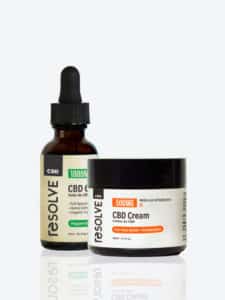
Best for chronic pain relief: Full Spectrum CBD Oil
This 30ml resolveCBD oil is made from locally grown hemp and contains full spectrum CBD. It’s a convenient way to consume CBD sublingually for fast-acting results. Perfect to find relief from chronic pain, anxiety, poor sleep, inflammation, or other specific purposes.
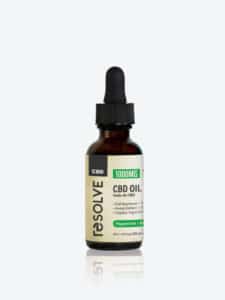
Conclusion
CBD has shown promise as a potential treatment for PTSD, with research suggesting that it may help reduce symptoms such as anxiety and insomnia.
However, more studies are needed to fully understand the effectiveness of CBD and to determine the appropriate dosages and delivery methods.
If you or someone you know is considering using CBD for PTSD, it is important to consult with a healthcare professional first to ensure that it is safe and appropriate for your individual needs.
DISCLAIMER: Information and products presented by resolveCBD are not intended to diagnose, treat, cure, or prevent any disease or ailment, nor is it intended to be a substitute or alternative for professional medical advice. Always consult with a licensed professional regarding medical treatment or possible interactions with prescribed drugs. Products are intended to be used as directed, by individuals who are 19 years of age or older.



